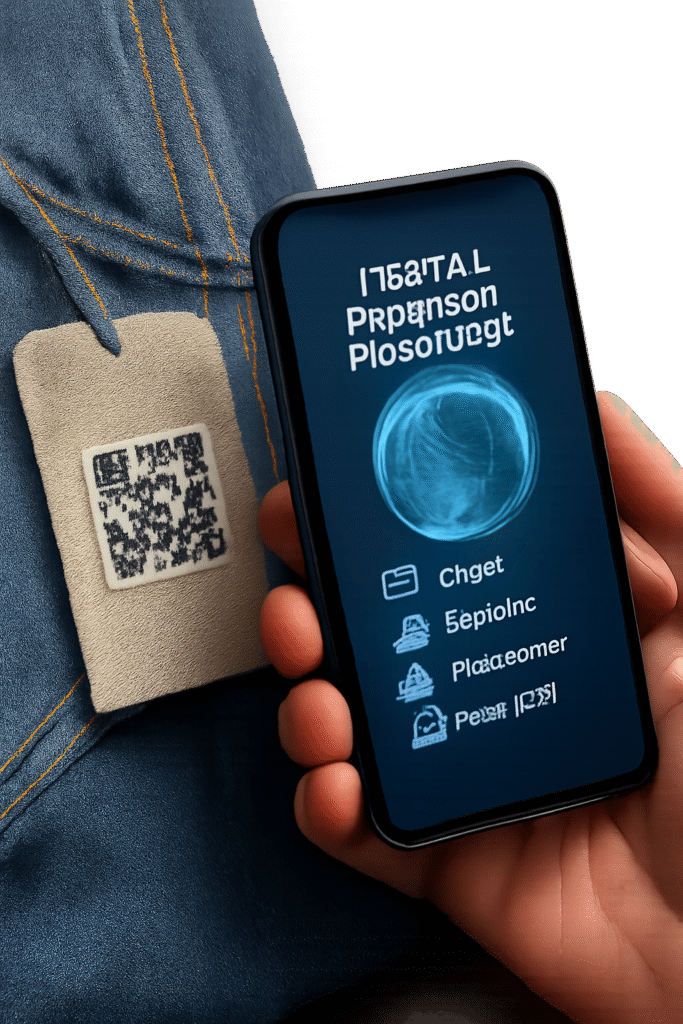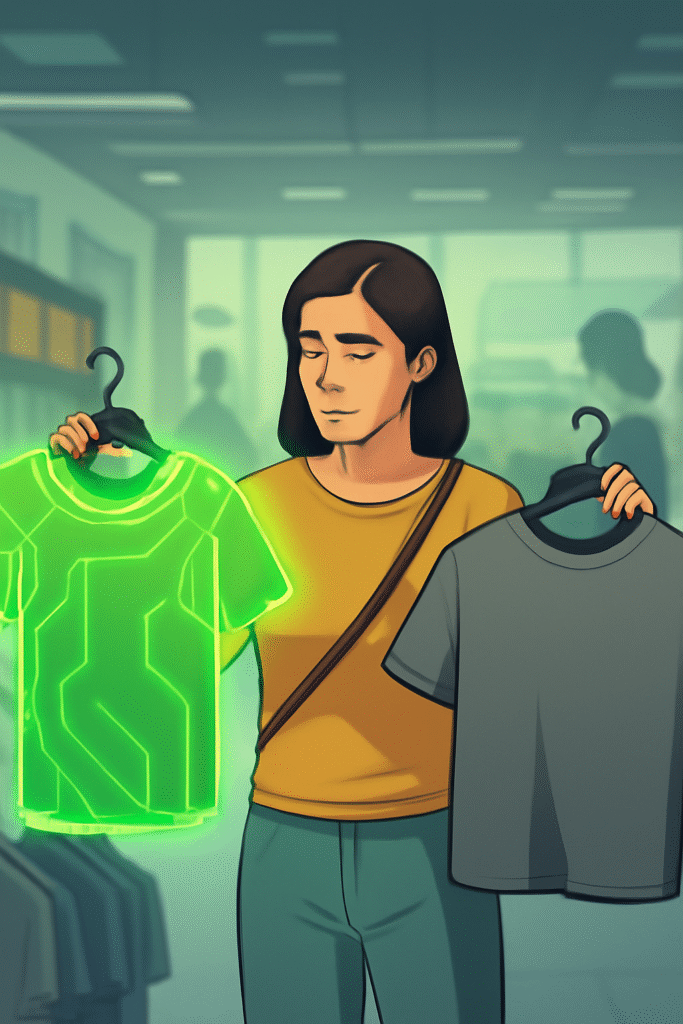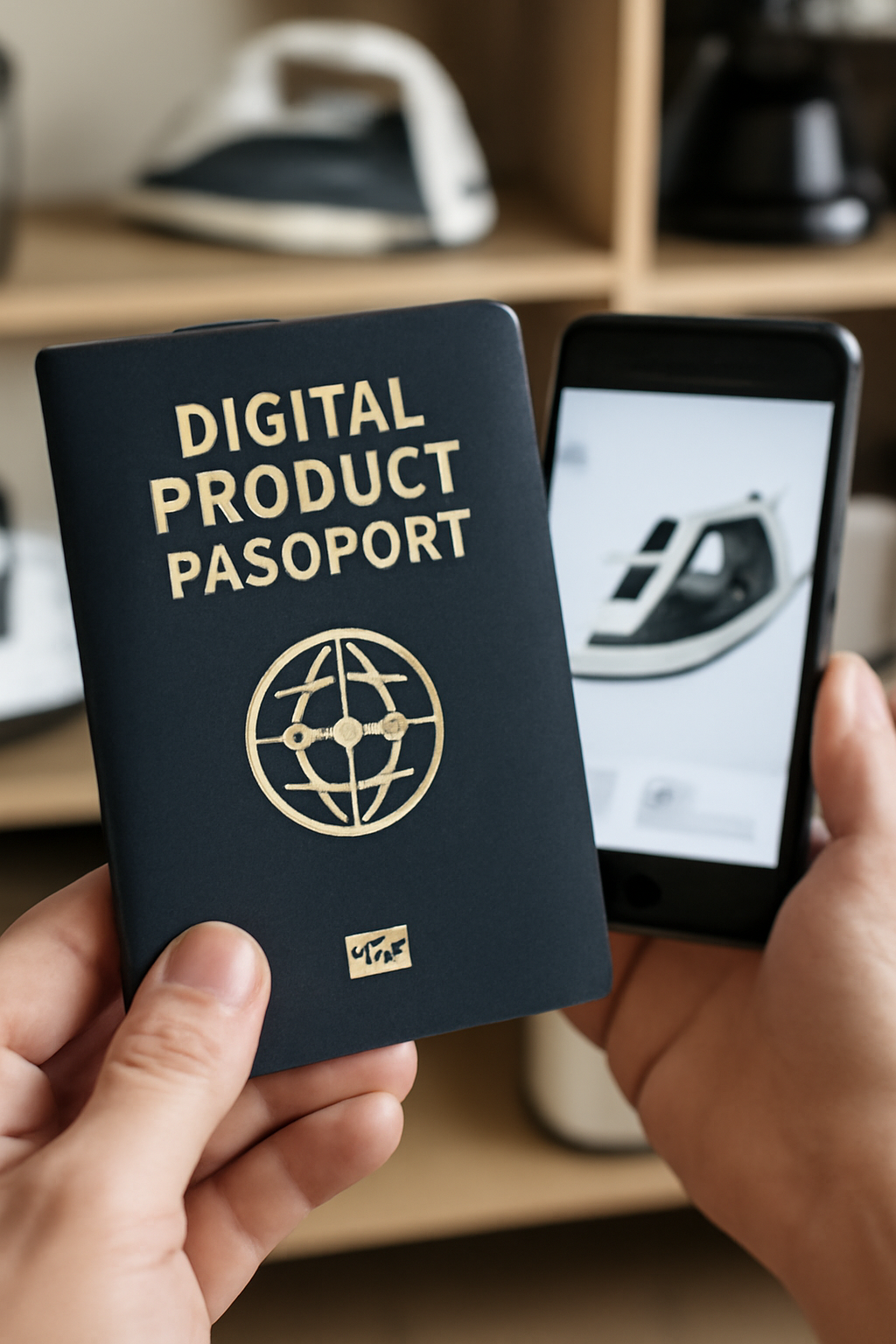Imagine um futuro em que cada produto que você compra — de roupas a eletrodomésticos, de carros a eletrônicos — venha acompanhado de um passaporte digital.
Não se trata de um documento físico, mas de um registro eletrônico que reúne informações essenciais: origem da fabricação, impacto ambiental, guias de reparo e instruções de reciclagem.
Essa inovação, que já começa a ganhar força na Europa, caminha para se tornar global — incluindo o Brasil. O objetivo? Trazer transparência e responsabilidade para o consumo.
Mas o que isso significa, na prática, para consumidores que desejam fazer escolhas mais conscientes no dia a dia?
O que é um Passaporte Digital de Produto?

Pense nisso como o RG digital de um produto — acessível por QR code ou chip embutido — reunindo informações essenciais como:
- Origem dos materiais (ex.: algodão orgânico, minerais livres de conflito)
- Informações do fabricante (localização, condições de trabalho)
- Pegada de carbono (emissões na produção e no transporte)
- Guias de reparo e manutenção (para prolongar a vida útil do produto)
- Instruções de reciclagem e descarte (reduzindo resíduos em aterros)
Em resumo: uma biografia do produto, transparente e à prova de adulterações.
Por Que Isso Importa Agora
Estamos em um ponto de virada:
🌍 Crise ambiental: 80% dos produtos são descartados precocemente por falta de informação sobre reciclagem (Relatório da Economia Circular da UE, 2025).
♻️ Avanço da economia circular: governos buscam reduzir resíduos rastreando o ciclo de vida dos produtos.
🛒 Demanda do consumidor: 73% dos compradores preferem marcas com transparência total (McKinsey, 2025).
Exemplo prático: vai escolher entre duas camisetas? O DPP pode revelar que uma delas usou 20.000 litros a menos de água na produção.
Como Isso Beneficia Você

✅ Compras informadas:
Escaneie um código para verificar alegações como “couro vegano” ou “comércio justo”.
✅ Combate a falsificações:
Identifique produtos falsos que não possuem DPPs autenticados.
✅ Reparos facilitados:
Acesse manuais digitais para consertar itens por conta própria (economia média de US$ 150 por ano).
✅ Maior valor de revenda:
Produtos usados com histórico de manutenção comprovado podem ser vendidos por até 30% a mais.
✅ Descarte sem culpa:
Saiba exatamente como reciclar eletrônicos ou tecidos corretamente.
Desafios Pela Frente
⚠️ Preocupações com privacidade:
Históricos de compra podem ser rastreados? (Sistemas compatíveis com a LGPD/GDPR estão em evolução.)
⚠️ Custos:
Produtos com DPP nos estágios iniciais podem custar 5–10% a mais — mas os preços tendem a cair com a escala.
⚠️ Adoção desigual:
Pequenas marcas podem enfrentar dificuldades de integração tecnológica até 2027–2030.
Caso de Uso no Mundo Real
Comprando um tênis em 2026:
1️⃣ Escaneie o QR code → veja a fábrica onde foi produzido.
2️⃣ Confira o “Índice de Sustentabilidade” (ex.: 85/100 por uso de materiais reciclados).
3️⃣ Anos depois, revenda com prova verificada de autenticidade.
4️⃣ Recicle as solas em um ponto de coleta mapeado.
Setores que Lideram a Mudança
👗 Moda:
A H&M testa projetos-piloto de DPPs que mostram a localização das fazendas de algodão utilizadas.
📱 Eletrônicos:
A Fairphone lista as fontes de minerais livres de conflito usados em seus dispositivos.
🚗 Automotivo:
A Tesla explora o uso de DPPs para facilitar a reciclagem de baterias.
Como se Preparar

🔍 Procure QR codes nas etiquetas ou embalagens (cada vez mais comuns em produtos importados da União Europeia a partir de 2026).
📢 Exija transparência: pergunte às marcas: “Onde está o seu DPP?”
♻️ Adote o hábito: trate os DPPs como recibos digitais — escaneie e salve.
O Panorama Maior
Isso não é apenas um rótulo — é uma mudança cultural. Até 2030, os DPPs podem:
Reduzir o lixo eletrônico global em 40%, graças a melhores práticas de reciclagem.
Tornar o greenwashing praticamente impossível.
Transformar cada consumidor em um participante ativo da economia circular.
O futuro das compras é rastreável. Você estará pronto?
